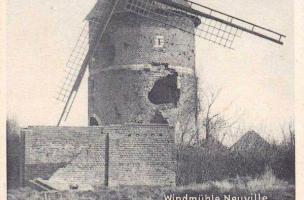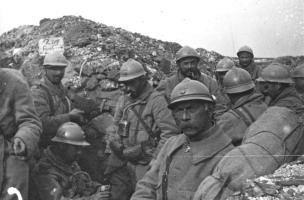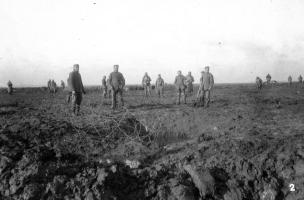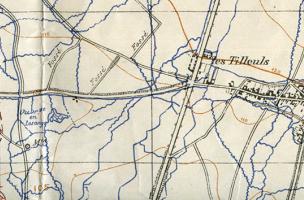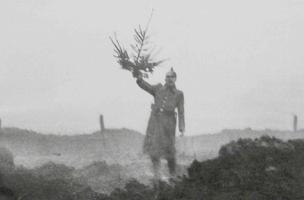You are here
Excavation of the “Moulin Rouge” in Thélus, a favored venue for French and German fraternization in 1915
The film “Joyeux Noël” by Christian Carion recounted the truces between soldiers during the First World War, episodes of “fraternization” forgotten in history.
The war journals of Louis Barthas are a rare testimony to the fraternization between French and German soldiers in December 1915 at the “Moulin Rouge” (“Red Mill”) in Thélus (Pas-de-Calais). One century later, in October 2015, the archaeology service of the city of Arras and Inrap explored, with authorization by the State (Drac Nord-Pas-de-Calais), the “Moulin Rouge”, a favored venue for these unofficial ceasefires.
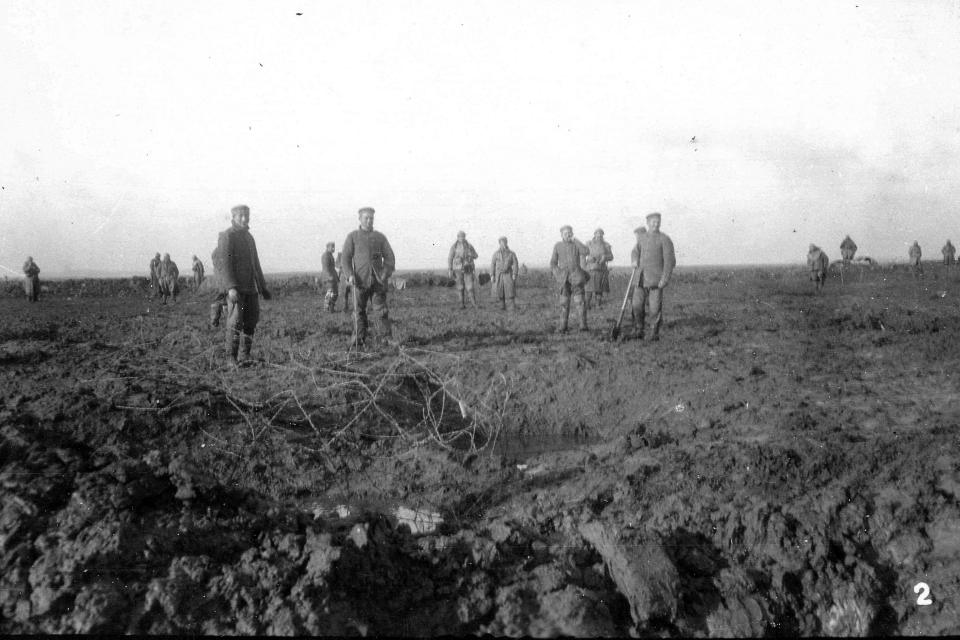
Fraternizing at the “Moulin Rouge”
Archaeology of the “Moulin rouge”
The archaeology of a battlefield

The Corporal Louis Barthas
© D.R.

General view of the Moulin Rouge described by Barthas during the winter of 1915, and which was the subject of an archaeological excavation one century later, to the day
© Jean-Louis Bellurget, Inrap.
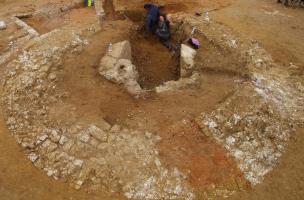
The mill in the process of excavation. At the center of the photo, the part that was cemented by the Germans at the end of 1914/beginning of 1915
© Gilles Prilaux, Inrap.

Trench perpendicular to the Moulin Rouge trench, with part of its timbering preserved
© Gilles Prilaux, Inrap.

The remains of two French soldiers of the 126th Infantry Regiment, discovered in Thélus in 2012
© Service archéologique d'Arras

The tag of Henri Faux, a soldier of the 50th Infantry Regiment, incorporated in the Périgueux region and deceased for France on 26 September 1915. The remains of this French soldier were discovered in December 2011 by the Archaeology Service of the city of Arras
© Service archéologique d'Arras
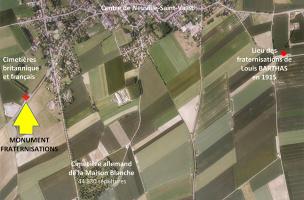
Site map
© Communauté Urbaine d'Arras
While overseeing the construction work of the Meuniers activity zone in Thélus by the urban community of Arras, the Arras Archaeology Service has exhumed 26 bodies since 2012: 8 Germans, 1 Canadian and 11 French of the 50th Infantry Regiment, 6 of whom have been identified. Before the arrival of the archaeologists, for security reasons, the excavation zone was pyrotechnically de-polluted.
Inrap
With more than 2,000 collaborators and researchers, Inrap is the largest archaeological research institute in France and one of the most important in Europe. Each year, this national research institute realizes approximately 1,800 archaeological diagnostic operations and 250 excavations in partnership with private and public developers in metropolitan France and its overseas territories. Its missions also include the scientific study and diffusion of the results and the transmission of archaeological knowledge to the public.
The Archaeology Service of the city of Arras
The Archaeology Service of the city of Arras was created in 1977. Since this date, research and preventive excavations have been realized in the city and the urban community. They are regularly published. Six permanent posts have been occupied since 2001, and the service was accredited by the Ministry of Culture and Communication the following year.
The Regional Direction of Cultural Affairs
The Regional Direction of Cultural Affairs – Regional Archaeology Service enforces, within the region, the State policy concerning archaeology. Its mission is to inventory, study, protect and preserve archaeological patrimony, as well as presenting it to the public. It establishes archaeological prescriptions and delivers excavation authorizations. It enforces the legislation on archaeology (Livre V du code du Patrimoine, etc.) and contributes to the enrichment and updating of the archaeological map of Nord-Pas-de-Calais by collecting information from surveys, excavations, bibliographic references and studies of ancient collections. The Regional Archaeology Service ensures the diffusion of publications, making them available on the Drac Nord-Pas-de-Calais internet site.
Archaeological research Inrap, Municipal Archaeology Service of Arras
Site directors Gilles Prilaux, Inrap and Alain Jacques, SAM of Arras
Mahaut Tyrrell
Media communication
Inrap, media partnerships and relations
+33 1 40 08 80 24 – +33 6 07 40 59 77
mahaut.tyrrell [at] inrap.fr ( )
Elisabeth Justome
Cultural development and communication
Inrap, Interregional Direction of Nord-Picardie
+33 6 73 73 30 33
elisabeth.justome [at] inrap.fr ( )


